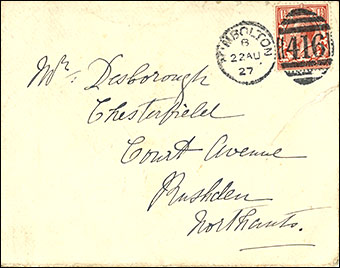 |
|
To Mr Desborough - Chesterfield, Court Avenue
|
The shop at the corner of Avenue Road and Newton Road, was begun in the front hall of a bungalow (no. 196) by Mr Desborough. He died in 1937.
The shop, still in the bungalow, was taken on by Mr Burgess, followed by Mr Saddington.
As trade progressed, the need for more space was overcome in June 1959 when an application was made to council planning for a lock-up shop, at 198 Avenue Road, by Mr. Beecham (perhaps the builder rather than owner?), and it was then built in the garden. In the late 1960s it was kept by the Chapman family.
In the mid 1970s I worked for Mr Oswald "Ossie" Keys and his wife Beryl. They took on this little shop and under their care it flourished and served the community well. They added a Post Office service to the general store and also sold newspapers. A delivery service meant customers could ring up with an order for delivery on any morning before lunch.
I worked just two mornings a week, to give Ossie chance to do the book-keeping. My first task would be to drive into Rushden to fetch the bread from Mr Keech's bakery in High Street and also to call at Miller's Cash & Carry in Albert Road to collect stock.
When I got back to the shop with the bread and goods, the car (a white Fiat estate car) was unloaded and the goods packed away. The orders had been prepared and I now loaded up ready to deliver to Newton Bromswold, Yelden, Avenue Road, Newton Road, Bedford Road, and Airfield Farm on the Chelveston Road.
The owners of the shop were Mr Desborough, then Burgess, Saddington, 1960s Chapman, 1970 Beryl & Ossie Keys, 1976 Gloria & Dennis Watts, 1979 John & Pam Lane and lastly Gill & Ian Poole. The shop closed in 2006, and has been demolished along with the bungalow; two very large detached houses now occupy the plot.
Evening Telegraph - December 1989
The Post Master at the Court Estate post office in Avenue Road heard his telephone tinkle at 2.30am as would-be burglars cut the cable. He alerted the police and the burglars were foiled. Unfortunately 300 houses were disconnected.
|